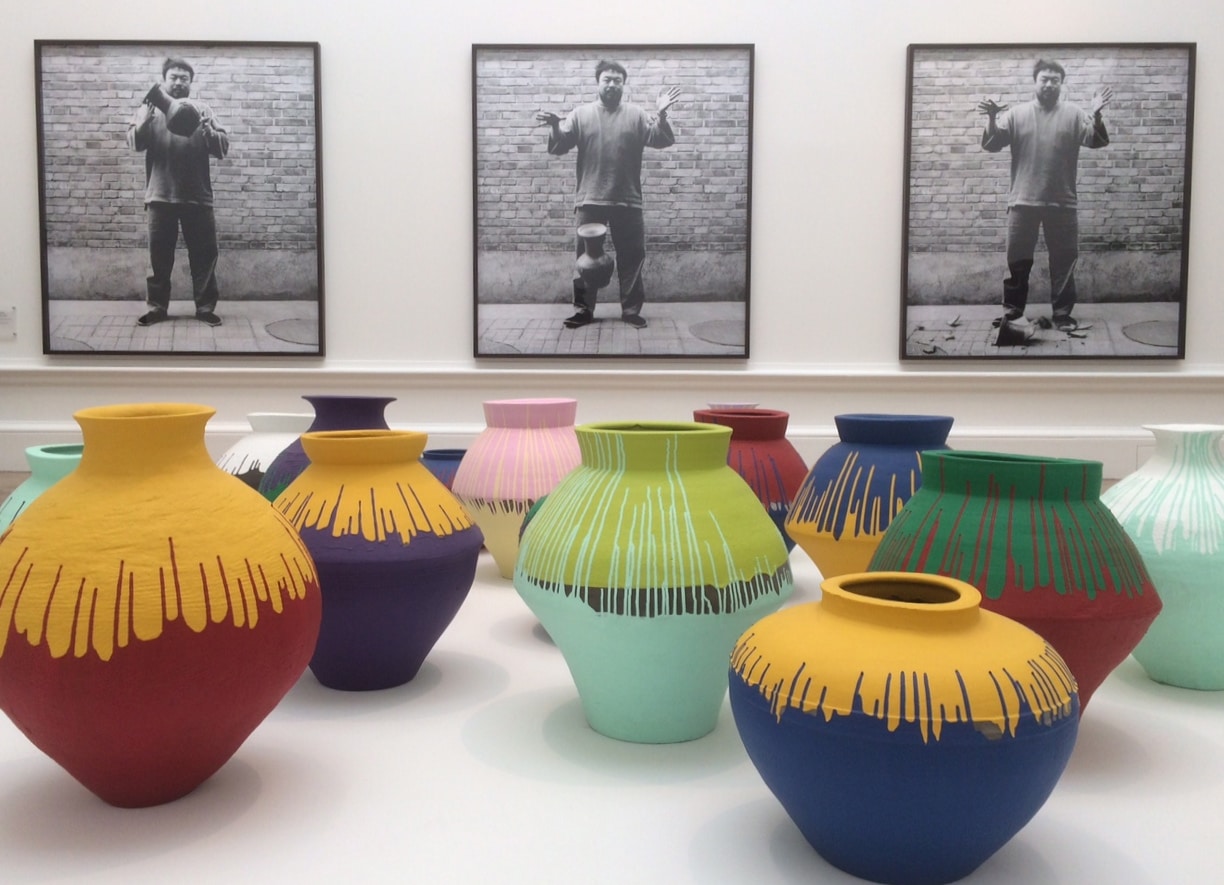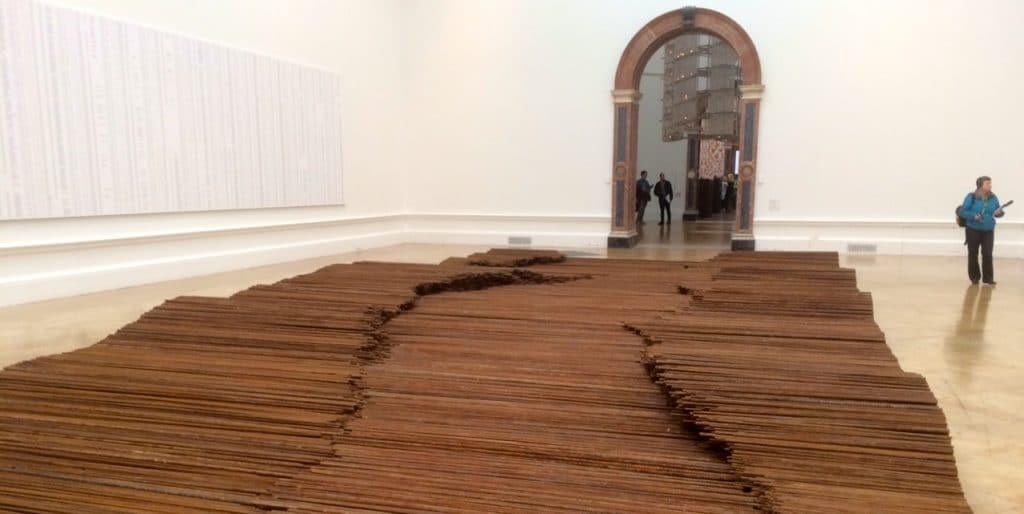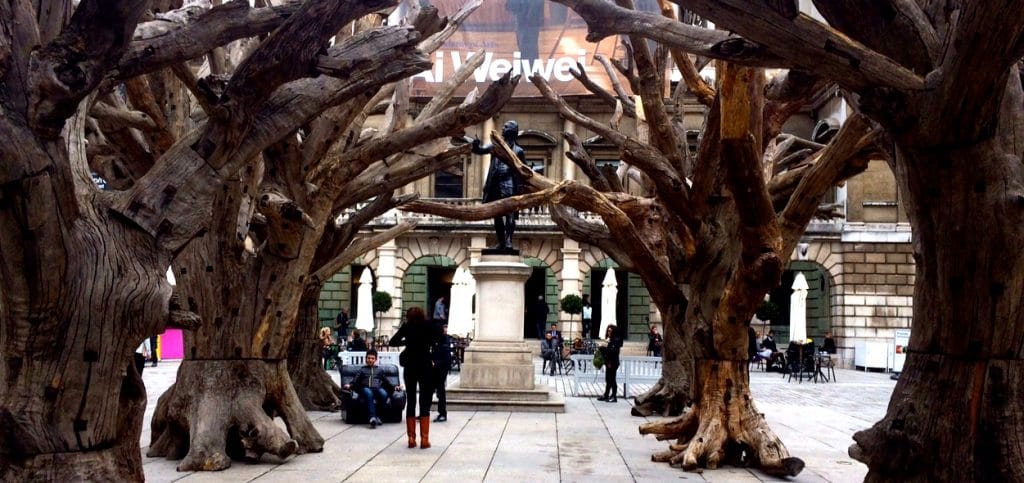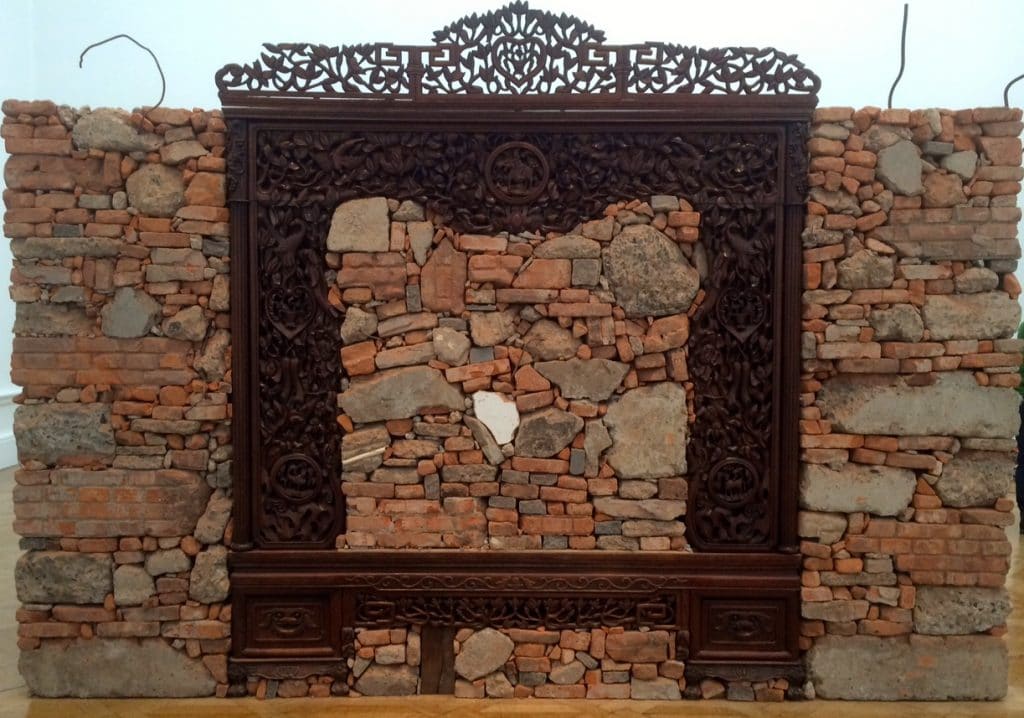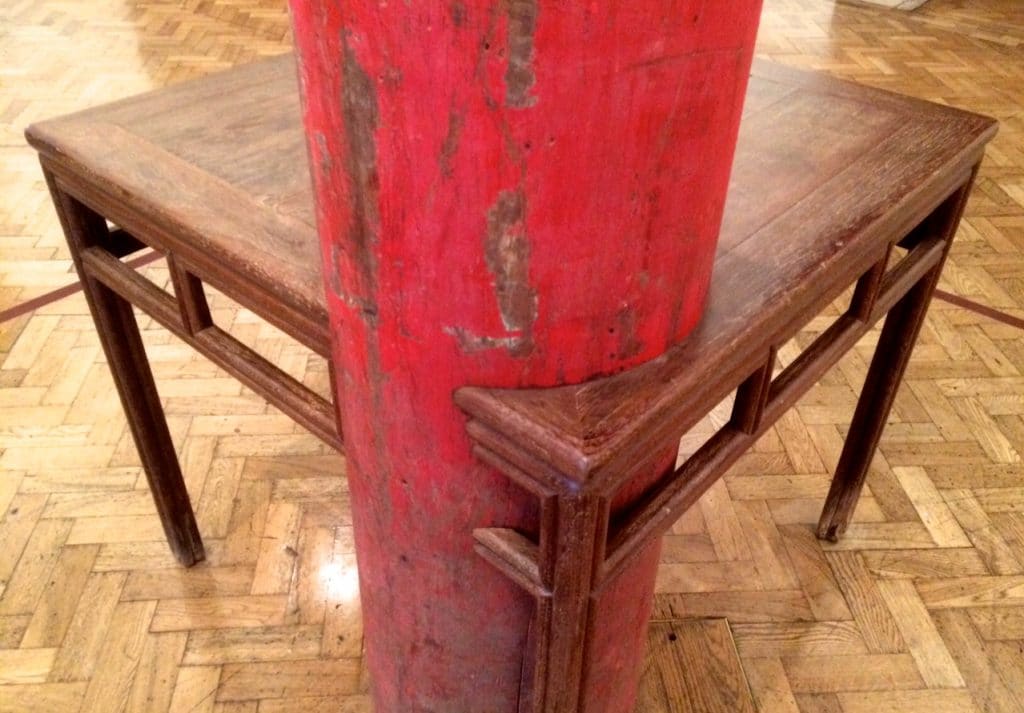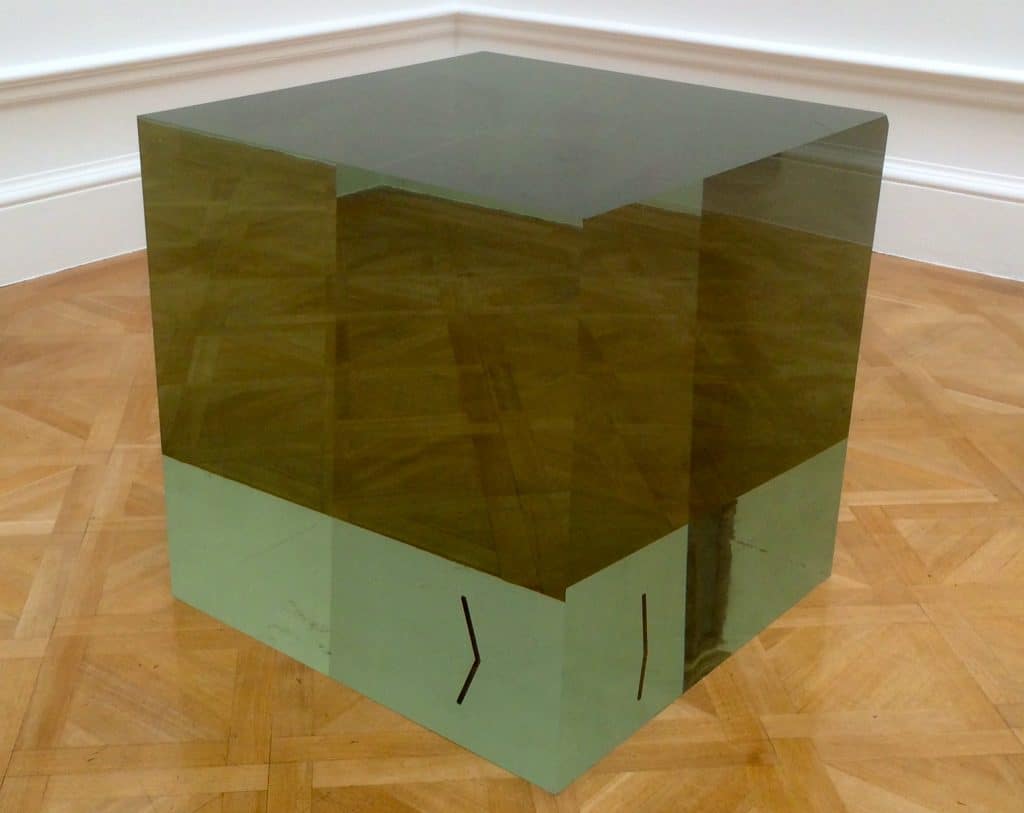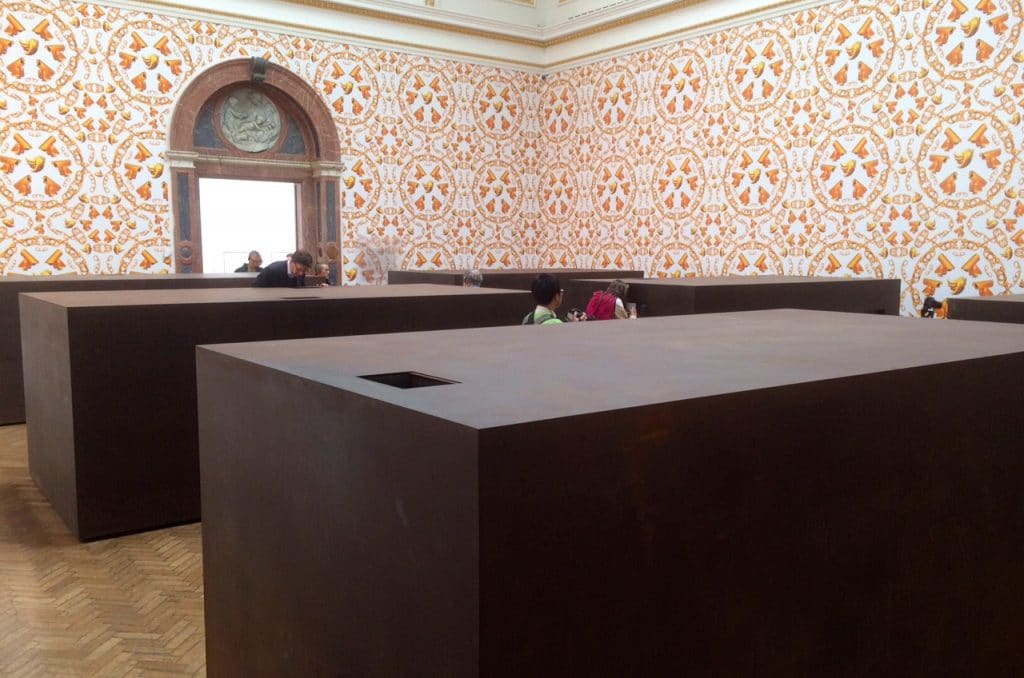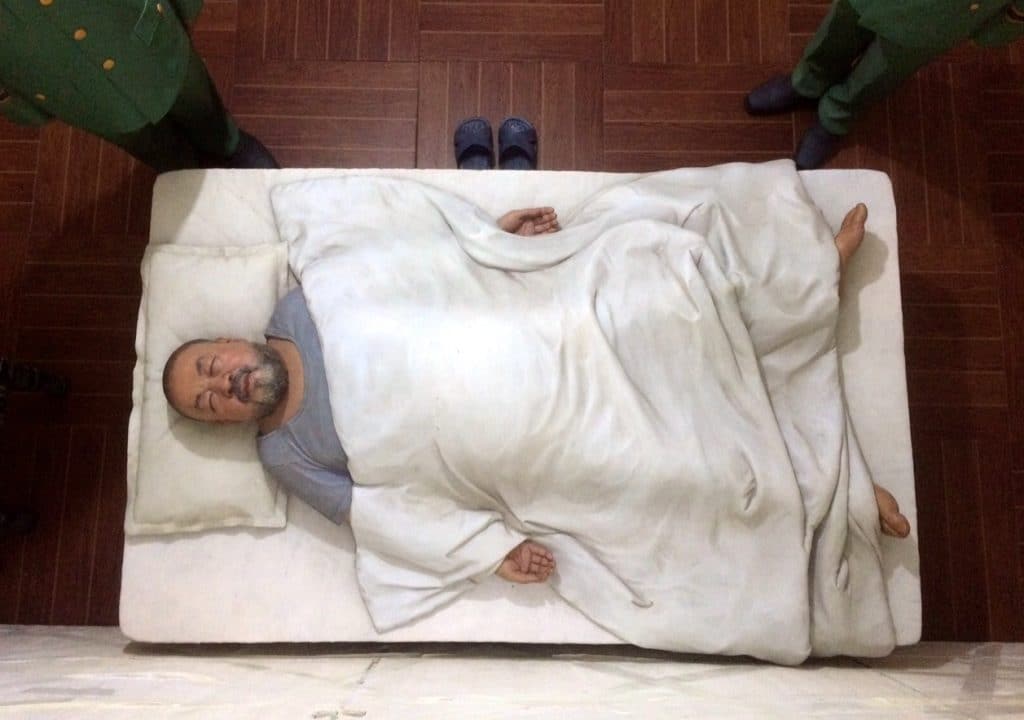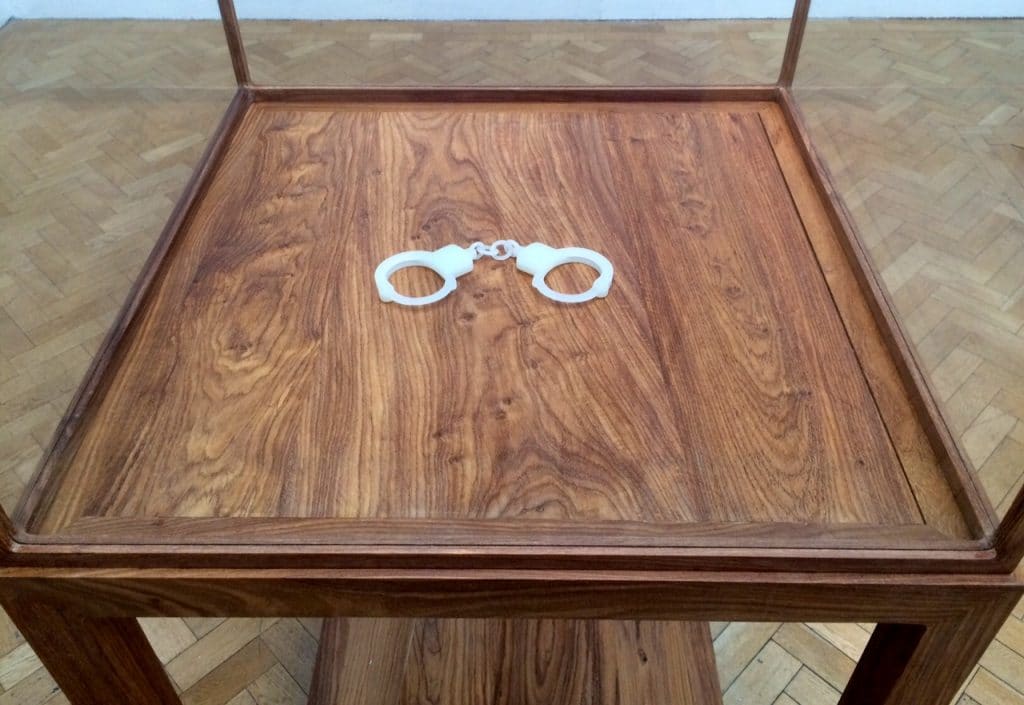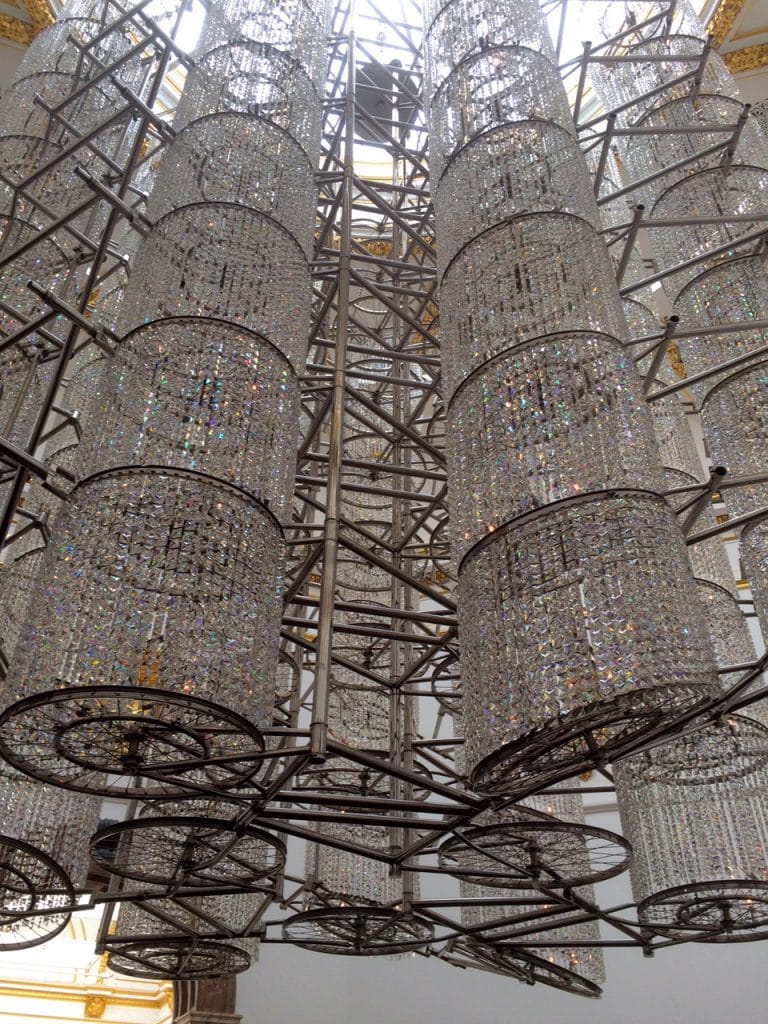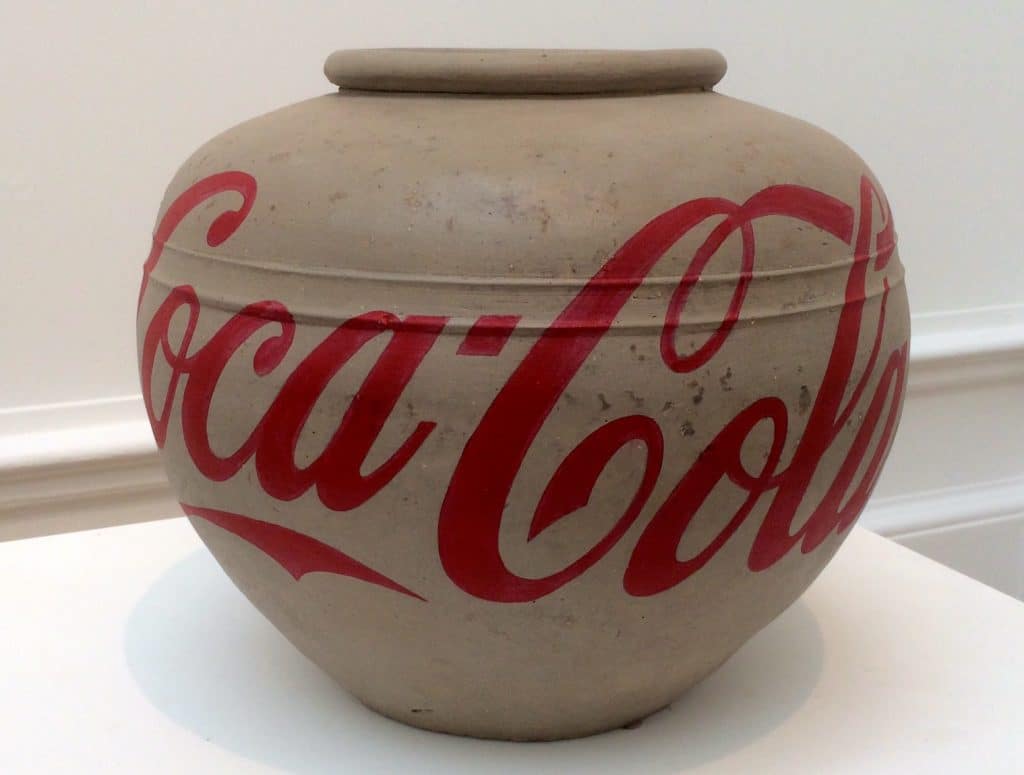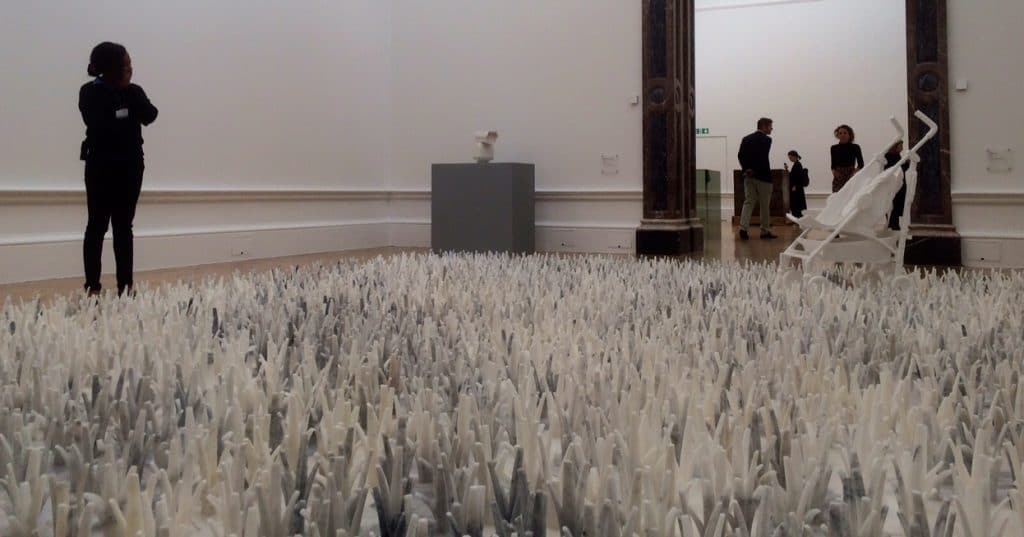The notorious Chinese dissident artist has clearly been very busy since his recent, and not insubstantial, exhibition at Blenheim Palace (reviewed here). His latest outing is at the Royal Academy where a survey of works from 1993 to the present day make up his first major institutional exhibition in the UK.
Blenheim provided an excellent historical foil for his anti-establishment works: the richly decorative interior a natural target for pieces that attack state control, and bourgeois ideals. At the RA Ai is more isolated, his pieces needing to succeed both individually, and as a cohesive body of work. Unfortunately this is not quite the case – his rather blunt methodology sometimes left exposed in is an exhibition that is fortunately however more hit than miss.
The largest new work on show here is Straight (2018-12), which fills the largest of the halls. Thousands of rebar concrete reinforcement rods were secretly purchased from the recycled rubble of the Sichuan earthquake, straightened and arranged in an undulating and split metal sculpture that occupies the central area.
The structure represents the undulations and cracking of the earthquake, although it is not particularly clear, works as a fitting memorial for the thousands that lost their lives in the disaster, many of them children who died in the poorly constructed concrete buildings, compromised by the corrupt officialdom. A moving film looks at the disaster whilst victims names meanwhile line one of the walls.
In another room, an impressive many-arched structure is built from wooden fragments of destroyed temples, the whole apparently shaped like a map of China if viewed from above. In Bed (2004), a beautifully made sculpture of dark iron wood bears a 3D profile of the country and its borders. As do the ridges and grooves of a set of round, wall-mounted aluminium frames.
Coloured Vases (2015) collects together a range of valuable vessels aged from the Neolithic to Qing Dynasty, dipped in paint in a work about authenticity and value. Better are the three photographs hung behind, entitled Dropping a Hang Dynasty Urn (1995), which attack the Chinese authorities destruction of historic buildings and objects. Both works however do have the morally ambiguous quality of destroying historically valuable pieces to make their point – because Ai the artist is the destroyer does that somehow make it better?
Four one metre cubes crafted from a variety of materials neatly echo Robert Morris’ minimalist mirrored cubes, but for little good reason, whilst I also wonder why an exquisitely carved marble pram sits in a bed of marble grass. The huge and impressive crystal chandelier incorporating bicycle frames is another strange hanging sculpture that seems to exist only for the incorporation of the bicycle, symbolic of ‘old China’.
The last of the main galleries revisits Ai’s ordeals at the hands of the Chinese authorities who held him in a tiny cell, and subjected him to various physical and mental tortures. Six half scale metal boxes recreate the cell in minute detail and incorporate Ai and his guards in various scenarios.
It is an intense and fascinating reminder of what the artist was subjected to, and a statement of how far he has come and how much he had to endure.
We should be grateful but it is nevertheless rather unfortunate that it is somewhat reminiscent of historic tableaux in a regional museum. Ultimately he has of course to be forgiven – we have to recognise his artistic and physical battle against what we must not forget has been one of the worlds most unforgiving and authoritarian regimes.
Much less forgiveable is the RA’s decision to crowdfund the installation of the monumental, and excellent, Tree sculptures that fill the courtyard. Some £123,000 was raised for their transport and installation, which surely this hugely profitable show should be providing? Is it not ironic that the RA have cynically manipulated the British public in a similar, albeit less oppressive, way that past Chinese governments have exploited theirs?
Despite our misgivings this is a show that is sure to be a crowd-pleaser; big on spectacle, it is worth seeing for the best works and a timely reminder that art must continue to fight against all political corruption, tyranny and oppression.
Ai Weiwei The Royal Academy of Art runs until 13 December 2015
For more information visit www.royalacademy.org.uk




